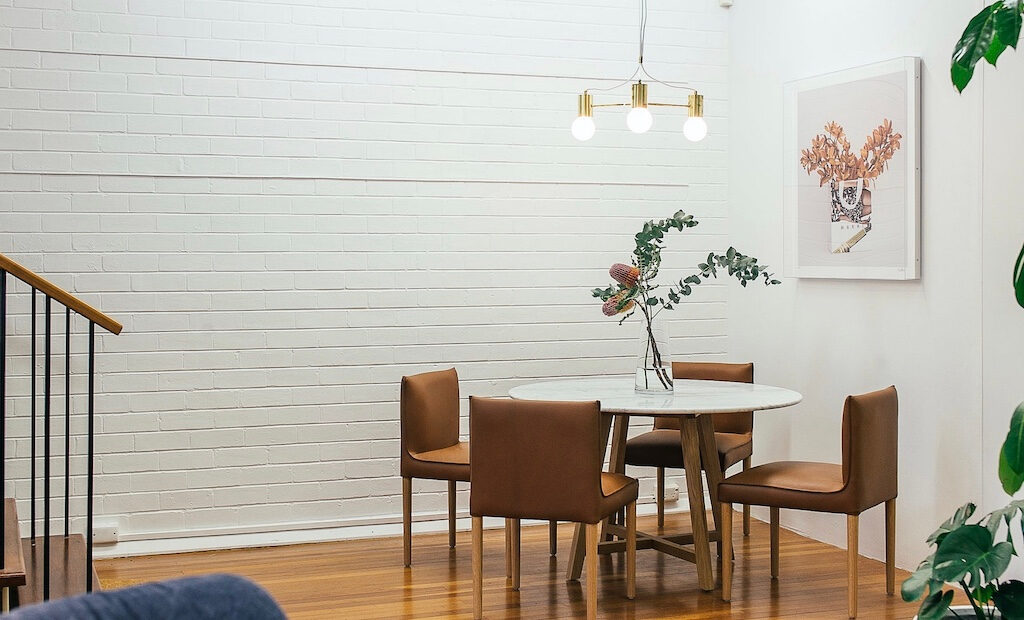LVT and laminate flooring: What are the differences?

When it comes to flooring options, it can be a bit overwhelming when you’re presented with lots of options; each offering their own unique benefits. Leaving you to weigh up what will suit your home best. Among the long list of floors, Luxury Vinyl Tile (LVT) and Laminate Flooring are two popular options.
Whilst they do share a lot of similarities, to the extent that it might be difficult to tell them apart if you looked down at them fully installed, they do have their differences and distinct features. All of which makes them suitable for different homes and preferences.
What are they made of?
LVT flooring is made of PVC and composed of several layers. The backing layer is the base of the flooring, which creates the structure and provides the support. The design layer is next, which is a printed image of wood or stone. Above that is a clear layer, which protects the material from any severe damage. On top is a protective wear layer, which helps prevent any surface scratches or scuffs.
Laminate flooring has very similar layers but is instead made up of HDF (high-density fibreboard). This means that the core material is made by combining wood fibre and glue and putting them under pressure and heat.
Appearance
LVT is renowned for its realistic appearance as the high-quality imaging technology used in the design layer manages to capture the details of natural materials. This allows LVT to closely mimic the look and feel of real wood and stone flooring.
Laminate flooring also replicates the appearance of natural materials, but it might not reach the same level of realism that LVT offers. There are also fewer design options with laminate flooring. But that isn’t to say that the images aren’t still good quality.
Durability and maintenance
LVT flooring is incredibly durable, lasting for up to 20 years as the PVC materials strengthen the floor, which makes it an excellent choice for active and busy households. The wear layer protects the surface from scratches, stains and moisture. LVT is also 100% waterproof, making it a popular choice for kitchens and bathrooms. LVT flooring can also be recoated with a new wear layer.
Laminate flooring is also known for its durability and can usually last for around 15 years. It’s resistant to scratches and scuffs, but it’s recommended that you use pads or rugs to protect your floor from your furniture. Unlike LVT, laminate can’t be recoated, but you can replace the tile or board that’s damaged. You can buy waterproof and water-resistant laminate flooring, but generally, it isn’t waterproof. Though it can handle some spills as long as the water isn’t left to stand.
Cleaning LVT and laminate is an easy task too; it’s recommended that you do it once or twice a week to prevent stains from settling on the surface. Then regularly sweep or vacuum your floor and mop it.
Cost
Both floors are close in price, but LVT can become more expensive depending on the quality, design and thickness of the flooring. Laminate flooring, on the other hand, remains a budget-friendly option. Its affordability is often an attractive selling point for laminate.
Installation
LVT flooring has a few options when it comes to installation; you can glue it, peel and stick it or click-lock it. The flexibility makes LVT suitable for DIY projects. However, it is recommended that you have a professional fitter when it comes to the glue method.
Laminate is a floating floor, which means it typically has a click-lock system. This allows the planks to connect without the need for adhesives, which makes it a popular choice for DIYers too.
Comfort and sound
Often the warmer and softer of the two, LVT can absorb and reduce sound better than laminate, which doesn’t provide the same level of warm or sound absorption. Instead, it’s recommended to use an underlay to enhance the comfort and reduce noise; the thicker the laminate, the better.
Conclusion
Luxury Vinyl Tile and laminate flooring each offer compelling features. Where LVT stands out for its remarkable realism, superior durability and versatile installation, laminate offers a more budget-friendly alternative.
The choice between the two depends entirely on your priorities, budget constraints, the requirements of the space you’re upgrading and your general preference. LVT might be better suited for the kitchen or bathroom, but you might decide that laminate offers a better range for your dining room or lounge.
The editorial unit

























Facebook
Twitter
Instagram
YouTube
RSS